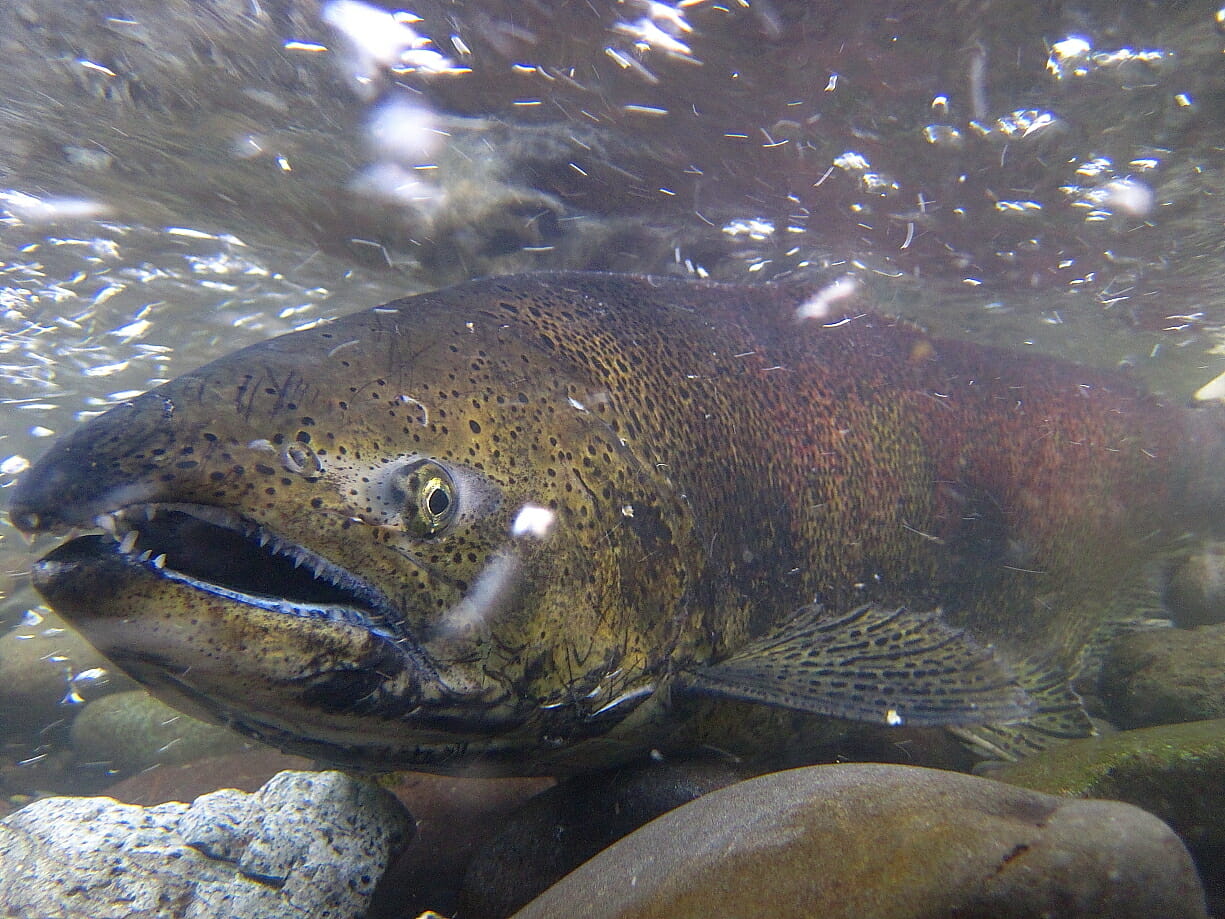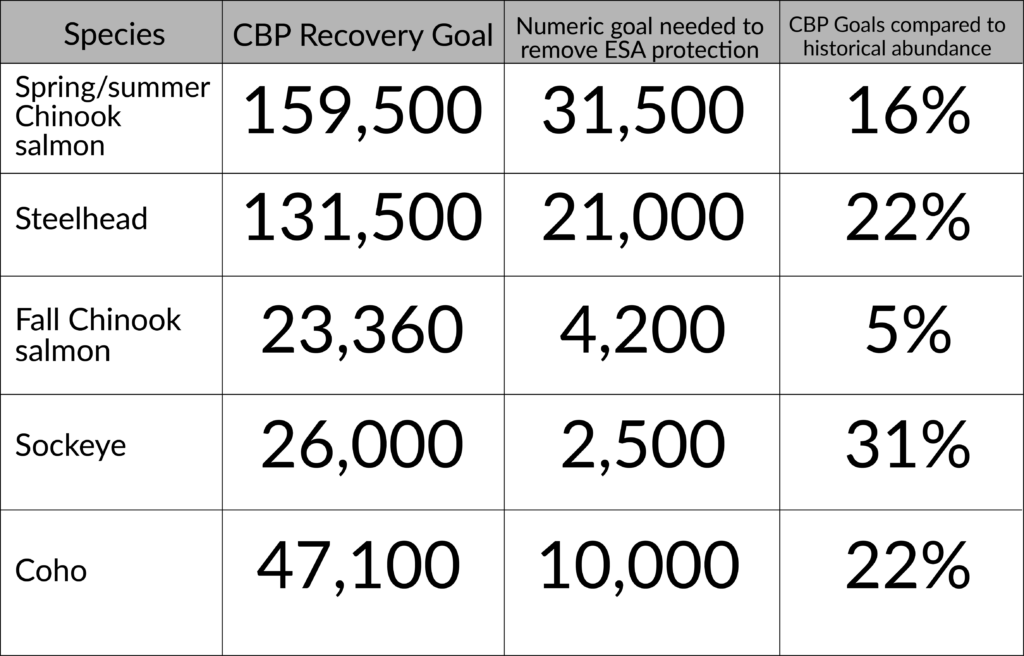Q.
What does salmon and steelhead “recovery” mean and who decides?
For Trout Unlimited, recovery means abundant, healthy and harvestable populations of wild salmon and steelhead returning regularly. But to better quantify what that means, both scientifically and socially, we turn to the Columbia Basin Partnership.
What is the Columbia Basin Partnership?
The partnership is a diverse group of 31 Columbia Basin stakeholders and sovereigns, including representatives of the four Columbia Basin states, tribes, ports, public power entities, irrigators, commercial and recreational fishers and conservationists. It was the Partnership which unanimously defined “recovery” to mean “healthy and harvestable” naturally reproducing populations of salmon and steelhead.
How many fish do we need?
To more concretely define those terms, the Partnership created a range of goals – low, medium and high. The high-end goals are shown below.


To achieve cultural and economic stability provided by healthy salmon and steelhead stocks, many more naturally produced fish are needed to meet the recovery goals established by the Partnership – roughly five times the number needed to lift ESA protections. Still, these goals are a modest percentage of historical numbers.
How are these goals different than those of the agencies tasked with managing populations?
The way salmon and steelhead are currently managed by NOAA Fisheries sets a much lower bar. NOAA abides by the requirements of the Endangered Species Act (ESA). The ESA requires only that risk of extinction be sufficiently low over a 100-year timeframe. The Partnership’s definition of recovery takes a much broader approach and considers both the health of the fish and the strong desire of people to fish for salmon and steelhead, which fuels rural economies and meets treaty obligations to Native American tribes.

